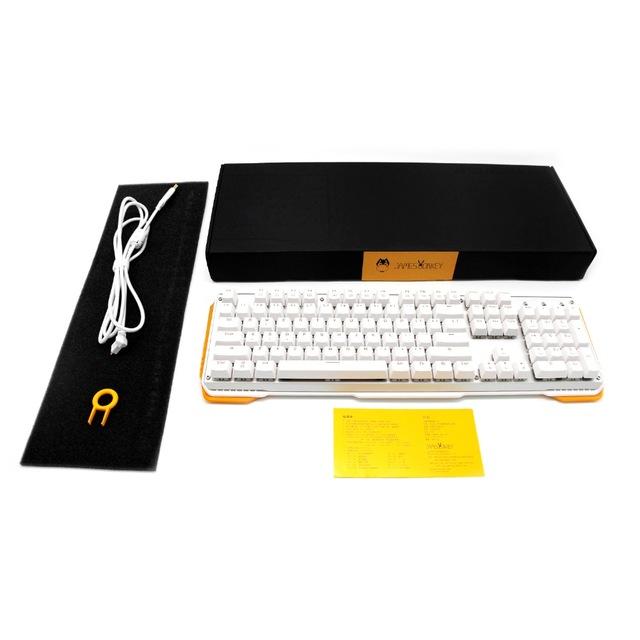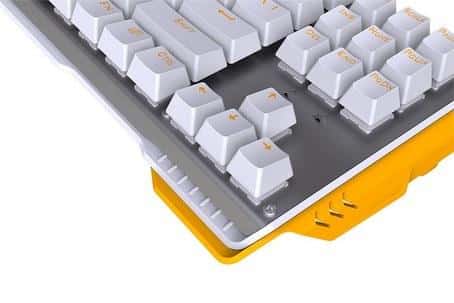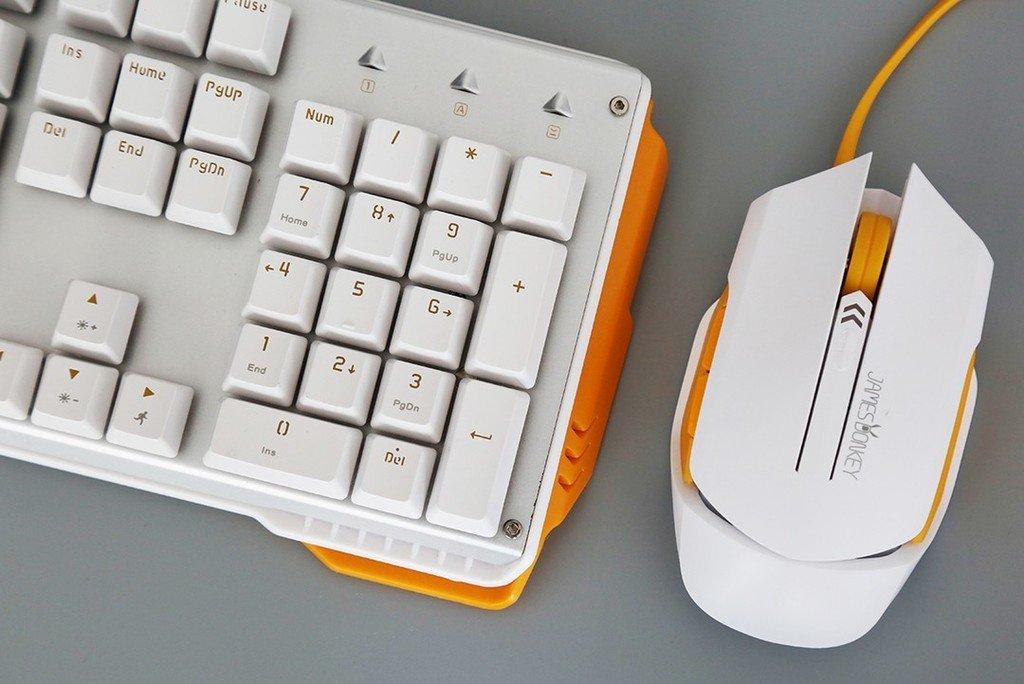The James Donkey 619 mechanical gaming keyboard is probably not something you have heard about. In the world of gaming keyboards, there are a lot of much more expensive keyboards on the market with much larger marketing budgets. Whether you have heard of it or not, you should give the James Donkey 619 some consideration if you are in the market for a budget mechanical keyboard.
Unboxing

This is the part in my reviews where I usually warn you about how kind the company is for sending me the item. This review is a little different. My old keyboard decided to bite the dust, so I hopped on Amazon and spent my hard-earned cash on the most affordable mechanical keyboard I could find. For around $50, the James Donkey 619 was my choice.
The beauty of shopping on Amazon is the speed of shipping. I received my keyboard within two days of ordering (thanks, Prime!). As Amazon often does, the keyboard came in a shipping box about five-times too big. Opening the box revealed a small thin keyboard-sized box with James Donkey branding.
When I removed the keyboard box out of the shipping box, I could hear some keycaps rattling around. I opened the box to reveal the James Donkey 619, a handful of loose keycaps, and a small card/pamphlet that was in a language I could not read.
The loose keycaps did not worry me; it looked like they were knocked loose during shipping. The beautiful thing about mechanical keyboards is that it is straightforward to put the keycaps back into place. The keyboard looked nice overall. While there is some cheap-looking plastic making up the underside of the keyboard, the top is a lovely brushed metal and clean ABS plastic keys.
I had to hunt around a bit, but I eventually found the USB cable that connects the keyboard to the computer. I believe James Donkey is a Taiwanese company, so any included materials did me no good.
First Impressions
I usually talk about installation before first impressions. In this instance, we are talking about a keyboard that requires you to plug in a chord. So here is your installation breakdown: it’s super easy, you plug in a cord. Onward.
I already mentioned that the keyboard looked solid upon unboxing. I opted for the white and yellow model, though there is also a black and yellow model available. Similarly, there were options for backlit or non-backlit keys. I chose the backlit keys, as I usually play in moderately lit areas. The final choice was between blue or black switches; I wanted black switches, as this keyboard is primarily for gaming. If you are unsure about switches, check out my original article on mechanical keyboards.
As reliable as the keyboard felt, the plastic molding that makes up the back of the keyboard feels a little cheap. I can’t complain too much as the keyboard is somewhat budget. The key caps seem to come off a little too quickly, but again I can deal with that at the price point.
The brushed metal front is an excellent way to add weight to the keyboard and give it a more premium look. Unfortunately, the plastic molding that creeps up the side and towards the top of the keyboard gives off the impression of a children’s keyboard. Additionally, the bright yellow backlighting on the keys does not ooze high end, but it works.
That seems like a lot of negatives, but first impressions don’t always tell the whole story.
Using the James Donkey 619

The first time I started using the James Donkey 619, I was honestly impressed. The black switches were perfect for gaming, and they felt good quality. The key supplied the tactile feedback I expect with no weird dead zones or mushiness. It was a good start, as my biggest fear in buying a budget mechanical keyboard was low-quality switches.
As much as my friends liked to tease me about the board looking like “something you would buy your daughter,” it has functioned great. The keyboard has a weight and general feel you expect out of quality peripherals. It may have its “cheap” areas, but I am talking about overall feel.
I have also had no issues with the James Donkey 619 after some pretty heavy use. They claim the keys can survive 50 million clicks. While I am nowhere near 50 million clicks on the keys, I can tell you they are holding up after the first few thousand.
I believe I mentioned it earlier, but I would like to reiterate that the James Donkey 619 is a wired keyboard. The cable that comes with the keyboard is heavy-duty, and since it is just a micro-USB, it is very replaceable. One small letdown is the latency. As a wired keyboard, I would hope that the lag would match my other wired peripherals, but the James Donkey 619 comes in at three milliseconds. For a point of comparison, the Dream Machines mice I tested are at or sub one milliseconds. I never noticed the increased latency, but I can’t stop thinking about it.
Final Thoughts
The James Donkey 619 is by no means a premium mechanical keyboard, but it is a fine keyboard for the price. You get to choose the color that suits you, the switch type, and whether you want a backlight, all for around $50.
On top of the options, the keyboard sets up and works great from my extensive experience. The James Donkey 619 can look a little childish, but it performs like a true gaming keyboard. However, I would caution you that the keycaps are prone to pop off, and the backside is simply ABS plastic, unlike the brushed metal front.
The James Donkey 619 is a fine choice for those interested in trying their first mechanical keyboard, or those needing to procure a mechanical keyboard on a budget. Calling this keyboard “fine” is not an insult, I believe that the James Donkey 619 is amazing for the price range. However, there are many more advanced keyboards on the market, albeit at three or four times the price.
Make sure to follow Gamezo to stay up to date on gaming news and reviews!
The James Donkey 619 is a fine mechanical keyboard for the gamer on a budget, or someone looking to get their feet wet with a mechanical keyboard.
[penci_review]

